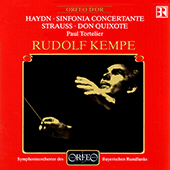Paul Tortelier
Paul Tortelier, noted for his invention of a bent cello endpin, was the son of a Breton cabinetmaker. Although his parents were not musicians, they encouraged their son and when he was twelve he entered the Paris Conservatoire, receiving tuition from Gérard Hekking from the age of fourteen. He later re-entered the Conservatoire to study harmony with Jean Gallon. Prior to this he had taken tuition from Beatrice Bluhm from whom he gained his French-style flexible bowing action, and then Louis Feuillard who, like Hekking, had been a pupil of Jules Delsart. From the age of twelve Tortelier supplemented the family income (as a number of other important musicians had to do, including Shostakovich and Casals) by playing in cinemas, restaurants and cafes.
Tortelier soon took up a number of prominent positions with orchestras, including the Monte Carlo Orchestra where he performed under Walter and Toscanini, and three years with the celebrated Boston Symphony Orchestra. In 1947 he first appeared in the UK (with Sir Thomas Beecham who forecast, accurately, that his temperament would make him popular in England). His Peabody Mason concerts in Boston in 1952 were also significant in his earlier career, and from the mid-1950s his teaching appointments at conservatories cemented his reputation as a pedagogue as well as a soloist. Tortelier’s association with Casals, which became a firm friendship, was also a key factor in his post-war career. From the mid-1960s he became known to British audiences through televised master-classes which apparently gave a one-sided impression of his personality since he seemed very self-assured and even arrogant. Those who knew him well however recall his skills as a raconteur, his sense of humour and his exceptionally wide knowledge of art, literature and philosophy.
Tortelier also composed for the cello; whilst it has been common for musicians to do so (often composing their own amuse-bouches and virtuoso tit-bits for concerts), by Tortelier’s time this was rarer. His profound and academic understanding of harmony made him a serious composer, with works including a concerto for two cellos and orchestra (1950) and two cello sonatas. He also produced editions of repertoire, his 1966 edition of the Bach Suites being published by Galliard.
Given Tortelier’s significant reputation as one of the best-known cellists of the second half of the twentieth century, it is extremely difficult to epitomise his playing in a small selection of recordings, but the items mentioned here will give a flavour of his approach. Immediately striking is Tortelier’s relatively modernist stance—analogous, perhaps, to Heifetz’s in violin-playing. Gone are the pronounced portamenti that inhabit the playing of artists from before World War II and instead, as is often the case, there is greater emphasis on the intensity of tone in the left hand via vibrato. This, whilst more or less continuous, is discreet—a kind of gloss on the tone, as it were—and offsets an otherwise quite straightforward approach to style and musical shaping. The inherent problem (which possibly explains why an unmodified modern mainstream tone is now in decline, with many players adapting it or indeed abandoning it entirely in historical repertoire) is that this approach can lead to a uniformity of sound which robs works of their points of colour and interest. In fairness, such is Tortelier’s greatness as a musician that he avoids this pitfall, although his Bach Cello Suites (1960) do sound rather quaint to modern ears, with a more or less sustained emission of sound at relatively metronomic tempi, as shown here in No. 4. In the Debussy Sonata (1959) Tortelier’s unmistakable Frenchness, via a fast vibrato, is allied with a free approach to accompanying rhythms (something very much advocated by Hekking). This loosens the texture and makes for an approach both conspicuously natural and imbued with a deep musical understanding. Tortelier’s intensity can be outworked in spectacular fashion in his concertos (here shown by a live 1972 performance of the Elgar under Boult) where musical gestures have an almost jewel-like clarity, counterpoising the passionate playing that such a work inspires. This also works well in the 1955 Dvořák Concerto and 1974 Brahms Double Concerto performances, the latter in particular avoiding the kind of monumental thickness of tone and leaden-footed tempi that so frequently bedevil this complex work. Included here is that favourite of cellists, Schubert’s Quintet in C, with an illustrious line-up of twentieth-century musical giants recorded at the 1952 Prades Festival (see also Milton Katims). This performance testifies not only to the effervescent informality arising from this particular union of soloists, but also creates a fascinating insight into the tonal differences between the smaller-scale precision of Tortelier and the more rustic, ‘big picture’ approach of Casals.
What comes across powerfully in all these recordings is Tortelier’s unmistakable tonal approach. There is thinness on the lower strings at times, perhaps due in part to his adoption of a crooked end pin, leaving the instrument at an atypically flat angle; nonetheless, it is Tortelier’s precise and clean upper-register playing that defines his unique contribution to the instrument in modern times.
© Naxos Rights International Ltd. — David Milsom (A–Z of String Players, Naxos 8.558081-84)

















